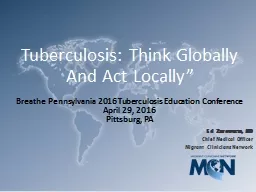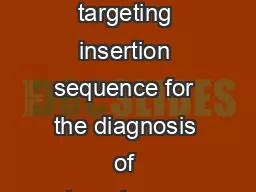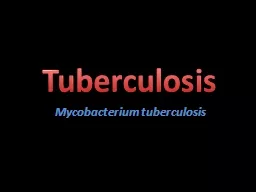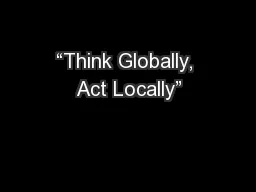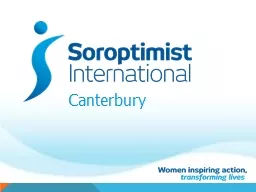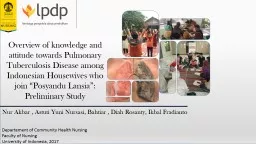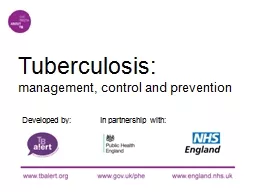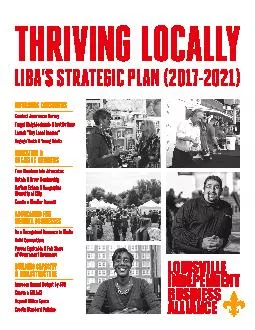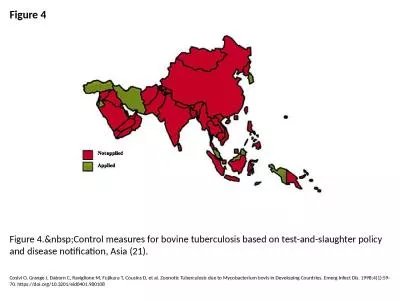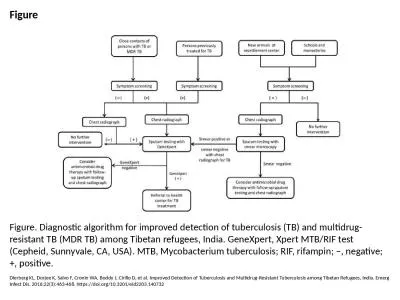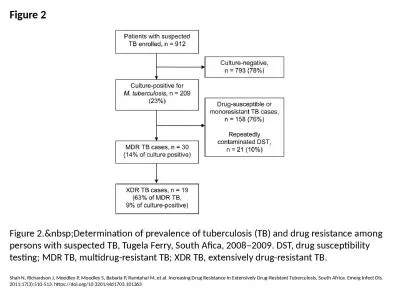PPT-Tuberculosis: Think Globally And Act Locally
Author : pasty-toler | Published Date : 2018-03-15
Breathe Pennsylvania 2016 Tuberculosis Education Conference April 29 2016 Pittsburg PA Ed Zuroweste MD Chief Medical Officer Migrant Clinicians Network 71 year
Presentation Embed Code
Download Presentation
Download Presentation The PPT/PDF document "Tuberculosis: Think Globally And Act Loc..." is the property of its rightful owner. Permission is granted to download and print the materials on this website for personal, non-commercial use only, and to display it on your personal computer provided you do not modify the materials and that you retain all copyright notices contained in the materials. By downloading content from our website, you accept the terms of this agreement.
Tuberculosis: Think Globally And Act Locally: Transcript
Download Rules Of Document
"Tuberculosis: Think Globally And Act Locally"The content belongs to its owner. You may download and print it for personal use, without modification, and keep all copyright notices. By downloading, you agree to these terms.
Related Documents

